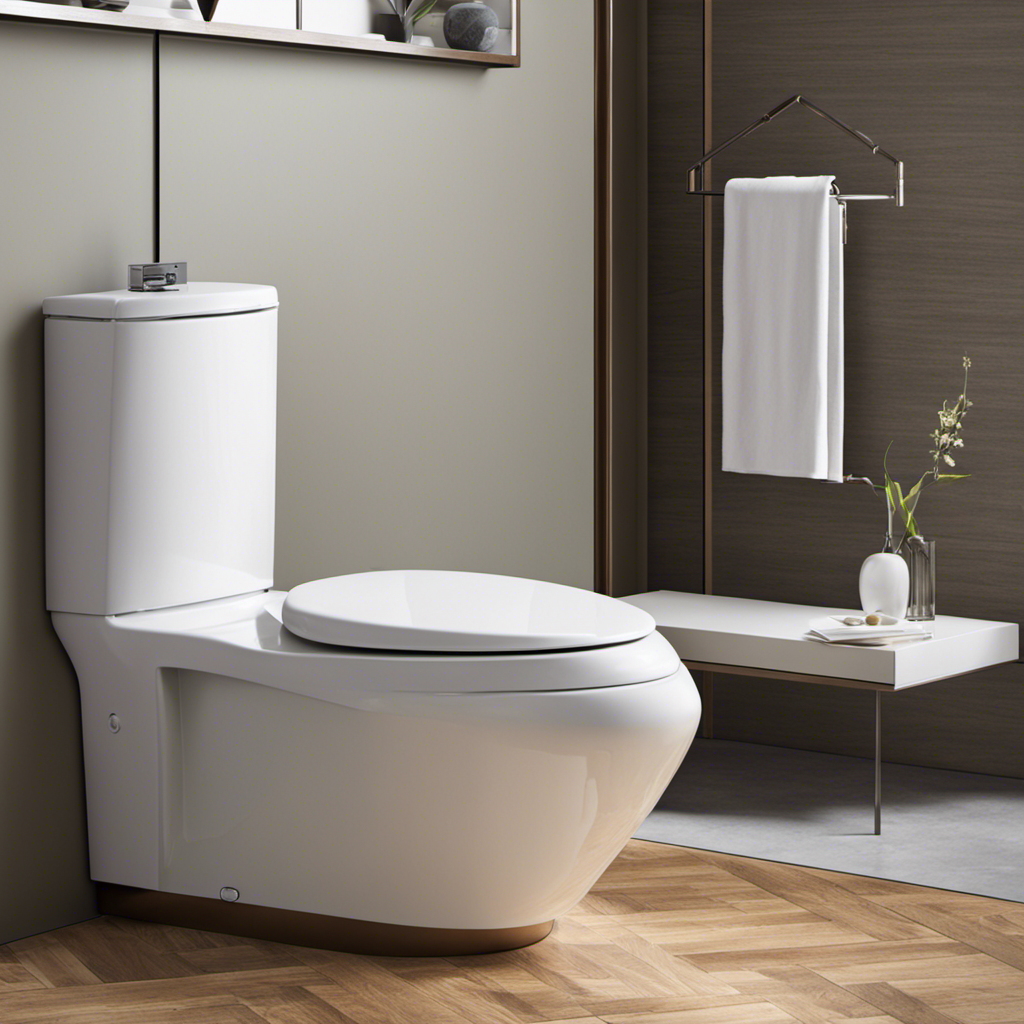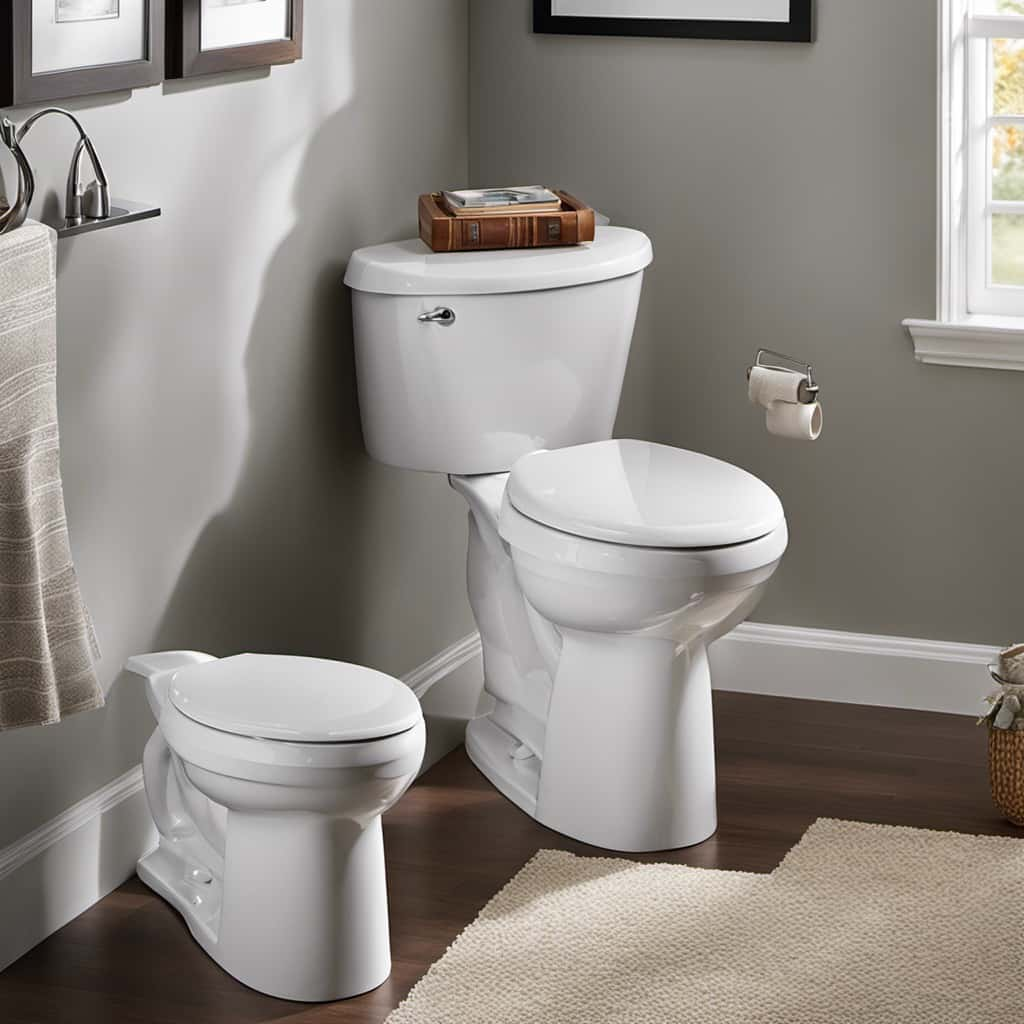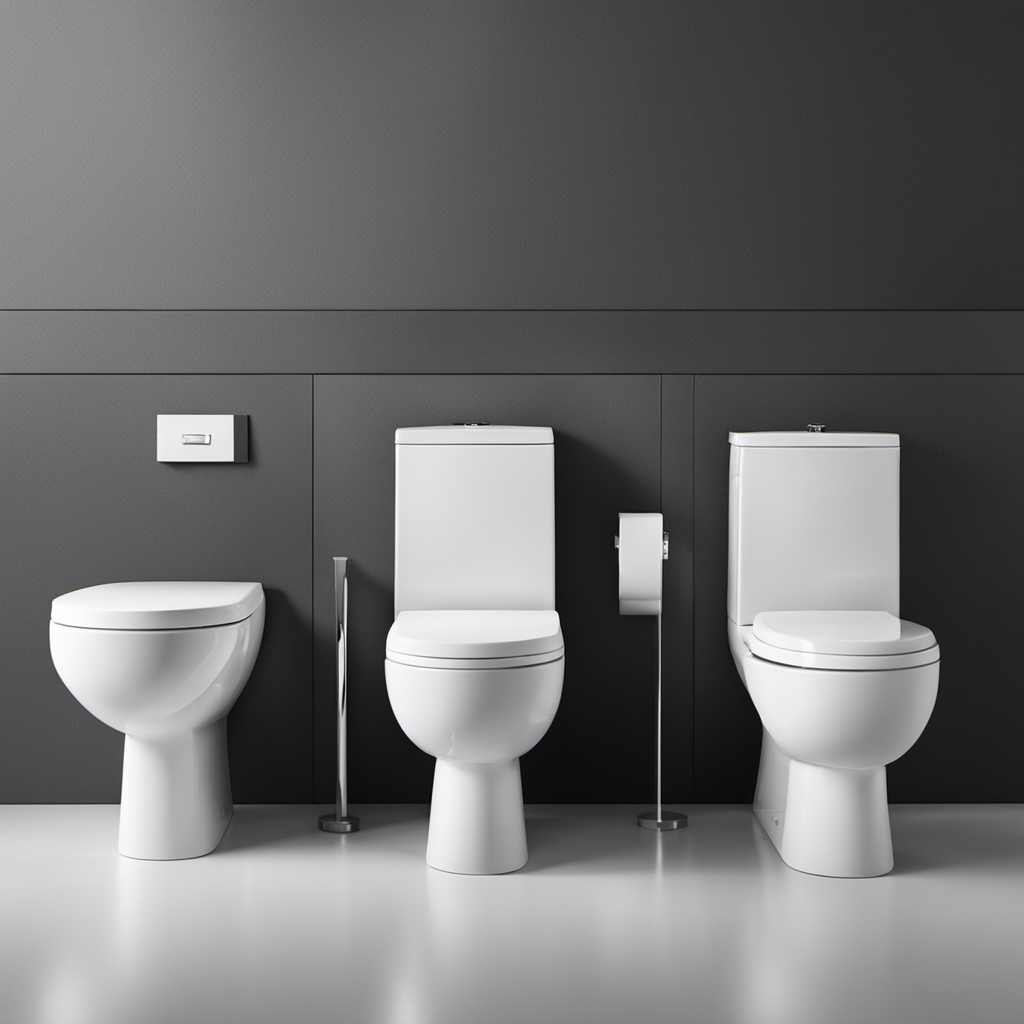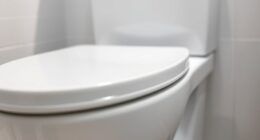I’ve always wondered about the mysterious measurement known as toilet rough in. What exactly does it mean? Why is it so important?
Well, lucky for you, I’ve done my research and I’m here to break it down for you. In this article, we’ll explore everything you need to know about toilet rough in measurements, from understanding its dimensions to troubleshooting common problems.
So, let’s dive in and unravel the mysteries of the toilet rough in!
Key Takeaways
- Toilet rough in measurements determine the distance between the wall and the center of the toilet’s waste outlet.
- Choosing the correct rough in measurement ensures a secure and functional installation.
- Proper dimensions prevent leaks and water damage by securely connecting the toilet to the plumbing system.
- Accurate measurements ensure a proper fit and efficient plumbing during toilet rough in installation.
Understanding Toilet Rough in Measurements
To understand toilet rough in measurements, you’ll need to know the distance between the wall and the center of the toilet’s waste outlet. This measurement is crucial for proper toilet rough in installation.
The toilet rough in requirements vary depending on the type of toilet and the plumbing system in place. The standard rough in measurement is 12 inches, which means the waste outlet is 12 inches away from the wall. However, there are also 10-inch and 14-inch rough in measurements available.
It is essential to choose the right rough in measurement to ensure a secure and functional installation. To determine the correct rough in measurement for your toilet, it is recommended to consult the manufacturer’s specifications or consult a professional plumber.
Importance of Proper Toilet Rough in Dimensions
Make sure you understand the significance of having the correct dimensions for your toilet rough in. It is of utmost importance to have a professional installation for your toilet. A professional plumber will ensure that the correct measurements are taken and that the toilet rough in dimensions are precise.
Choosing the right dimensions for your toilet rough in has numerous benefits. Firstly, it ensures that the toilet fits perfectly in your bathroom, leaving no gaps or uneven surfaces. Secondly, it prevents any leaks or water damage, as the toilet is securely and properly connected to the plumbing system. Lastly, it allows for easier maintenance and repairs, as the toilet can be accessed without any hassle.
Common Toilet Rough in Sizes
The most common sizes for toilet rough-ins are typically around 10 to 14 inches. When it comes to toilet rough in installation, it is crucial to ensure that the rough-in dimensions match the toilet you intend to install.
This is where knowing the common toilet rough in options becomes important. The standard rough-in size is 12 inches, which is the distance from the finished wall to the center of the drainpipe. However, there are also toilets available with rough-in sizes of 10 or 14 inches to accommodate different bathroom layouts.
It is essential to measure the rough-in distance accurately before purchasing a toilet to avoid any installation issues. Remember, having the correct rough-in size ensures a proper fit and efficient functioning of your toilet.
How to Measure Toilet Rough in
Measuring the rough-in for a toilet is an important step in the installation process. To ensure a proper fit and efficient plumbing, follow these steps:
-
Locate the centerline of the toilet flange. This is typically 12 inches from the finished wall.
-
Measure from the centerline to the wall behind the toilet. This is your rough-in measurement.
-
Check if your rough-in measurement matches a standard size, such as 10, 12, or 14 inches.
-
If your rough-in measurement doesn’t match a standard size, you may need to make adjustments by moving the flange or using offset adapters.
Accurate measurements are crucial for a successful toilet rough-in installation. By following these steps, you can ensure a proper fit and avoid potential plumbing issues.
Now, let’s explore how to troubleshoot common toilet rough-in problems.
Troubleshooting Toilet Rough in Problems
To troubleshoot common problems with your toilet rough-in, start by checking the alignment of the flange and the wall. Common causes of toilet rough-in problems include a misaligned flange, a damaged flange, or an incorrect rough-in measurement.
If the flange is not properly aligned with the wall, it can cause leaks or unstable toilet installation. To fix this issue, ensure that the flange is flush with the finished floor and securely fastened to the subfloor.
If the flange is damaged, it may need to be replaced with a new one. Additionally, if the rough-in measurement is incorrect, it can lead to a toilet that is too far from the wall or too close, causing aesthetic and functional issues.
In such cases, adjusting the rough-in measurement or reinstalling the toilet may be necessary. By addressing these common causes and applying the appropriate solutions, you can successfully troubleshoot toilet rough-in problems.
Frequently Asked Questions
What Are Some Common Materials Used for Toilet Rough in Measurements?
Toilet rough in measurements are crucial for proper installation. Common materials used include PVC, ABS, and cast iron. These materials provide durability and ensure a secure connection between the toilet and the waste pipe.
Can I Install a Toilet With a Different Rough in Measurement Than What My Bathroom Currently Has?
Yes, you can install a toilet with a different rough in measurement than what your bathroom currently has. There are various toilet rough in options available to accommodate different measurements.
Are There Any Building Codes or Regulations Regarding Toilet Rough in Dimensions?
Building code requirements and plumbing regulations dictate the dimensions of toilet rough-in. These guidelines ensure proper installation and functionality. Compliance with these standards is essential for a safe and efficient plumbing system.
Can I Modify the Rough in Measurement of My Bathroom to Accommodate a Different Toilet Size?
Yes, you can modify the rough in measurement of your bathroom to accommodate a different toilet size. By altering the layout, you can explore alternative toilet options that best suit your needs and preferences.
What Are Some Common Signs of a Toilet Rough in Problem That I Should Be Aware Of?
Toilet rough in signs can be detected through a few key indicators. These include leaks, unstable seating, and improper flushing. Troubleshooting toilet rough in problems requires expertise in assessing and adjusting the toilet’s installation.
Conclusion
So there you have it – the ins and outs of toilet rough in measurements.
Remember, getting the right rough in dimension is crucial for a properly functioning toilet.
It’s like finding the perfect fit for a puzzle piece, ensuring everything aligns smoothly.
And just like troubleshooting any problem, measuring the rough in is the first step towards a solution.
So next time you find yourself wondering about toilet rough in, you’ll have all the knowledge you need to tackle the task with confidence and precision.
Happy measuring!










